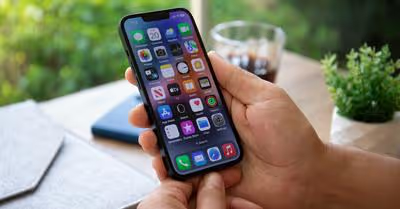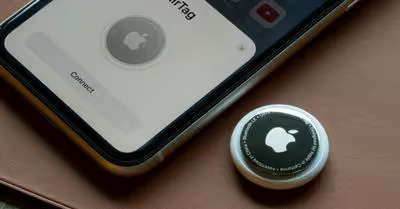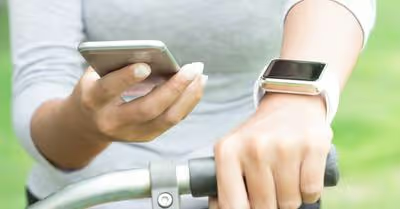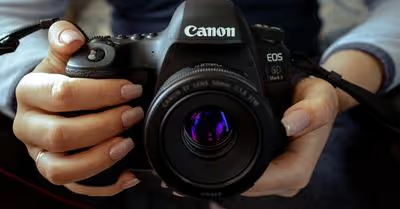Table of Contents
Grayed Out iPhone Flashlight - Control Center Solutions to Fix It
There are a few potential causes for an iPhone flashlight that is either completely inoperable or grayed out. Normally, when the camera is in use, the flashlight is grayed out due to certain flashes clashing with the iPhone flashlight. The iPhone apps may have developed bugs if they are used regularly for a long time. Here are some of the best control center solutions to fix the grayed-out iPhone flashlight:
Option 1 - Exit the Camera Application
When the camera app is open, the flashlight symbol is typically grayed out. The first thing you can do to solve the problem is close the application and see if that works. Depending on the iPhone model, there are many methods for closing an app:
iPhones that support Face ID: Go up from the home screen and stop in the center (you will open the App Launcher). Scroll left or right to locate the app you wish to close and swipe up to close it once you find it.
First-generation iPhone SE, iPhone 8, and prior models: Press the home button twice to view the most recently opened applications. Swipe right or left to locate the app you want to close, and swipe up to exit the application.
Option 2 - Close All of Your Apps
It's possible that another application using your camera is running in the background. Since it would be gray, pressing the flashlight button might not turn it on. Utilize the methods discussed above to locate the application in your app launcher and then shut it down.
Option 3 - Charge Your iPhone
The gray flash icon may occasionally appear when low power mode is used. Simply leave the phone charging for 30 minutes and then return to it. You will need to move on to the troubleshooting advice if the problem is still not resolved.
Option 4 - Deactivate LED Alert Flash
Although it doesn’t always work, a number of users claim that the grayed-out flashlight symbol can be fixed by switching off the LED flash for warnings or notifications. Here’s how you can do this:
- Open the Settings app on your iPhone and select Accessibility > Audio/Visual
- Look for LED Flash for alerts as you descend
- Turn the function off
Option 5 - Force-Restart Your iPhone.
Due to a malfunction or a small bug, your iPhone's flashlight may not be working properly. For example, your phone may seem to think that your camera is turned on when it is not. With a force-restart, you should be able to erase it. There are multiple ways to force a restart, depending on the type of iPhone model you have.
- Keep holding down the volume up button
- Long-press the Volume Down button
Or,
- iPhone 7 and 7 Plus: Hold the Side button down until the Apple logo shows
- When the Apple logo screen appears, hold down the Power and Volume Down buttons until it disappears
When the Apple screen shows, release the Power and Home buttons simultaneously, and your phone will restart itself. Hopefully, the problem with the iPhone flashlight will be fixed.
Option 6 - Update iOS
When was the last time you updated your iOS? The grayed out flashlight could be brought on by a defect in your operating system, which may also be the cause of other problems too. The most recent firmware can be downloaded via 2 alternative methods:
Method 1
- Go to Settings > General > Software Update on your iPhone.
- If there is a firmware file to download, click Install Now.
Method 2
- Launch the latest version of iTunes on your PC
- Utilize a USB or lightning cord to connect your Smartphone to your computer.
- Activate the Device tab.
- Choose Summary.
- Select the iPhone Update option.
Option 7 - Switch to recovery mode
Your flashlight may be acting strangely due to obstinate software problems.
You will need to boot into recovery mode if a force restart doesn't fix the problem. System reboot is a thorough method of locating and solving systemic problems.
Your entire system would be erased in an effort to fix any problematic applications. However, you will most likely lose all of your personal data and files so it’s best to create a backup of all the documents before attempting to reboot.
Here’s how you can reboot the system:
Open iTunes
Use a lightning cord or a USB to connect your iPhone to your computer
All other running programs should be stopped because they may interfere with the system repair
You will have to press the following buttons according to the type of device you have to restore your iPhone:
- Face ID-enabled iPhones: Press the Volume Up button, then the Volume Down button. Next, press the Power button with your finger until the recovery screen appears.
- iPhone 7 and iPhone 7 Plus: Keep your finger on the Power and Volume Down buttons until the recovery screen appears, then release both.
- 2nd generation iPhone SE, iPhone 6S, and prior models: When the recovery screen appears, simultaneously press and release the Home and Power buttons.
If the recovery process does not finish in 15 minutes, your device will automatically exit recovery mode. Upon completion of the process, your iPhone will restart. Hopefully, the issue with the flashlight not working won't arise again.
Option 8 - Use recovery Software
It's dangerous to go into recovery mode since you could lose all of your personal data and become bogged down with mistakes. Instead, you can utilize recovery software. Without removing any private information, they will check your machine and fix the most challenging software faults. However, keep in mind that the majority of them charge a fee.
Since there are so many recovery programs available, we will explain using AnyFix, which is one of the best recovery software:
- Download and run the application
- Utilize a USB or lighting cable to connect your phone to your PC
- Select iPhone or iPad issues
- Click Start Now
- From the list of available repair options that appears, select Standard Repair
- You must validate a firmware package, accept it, and then watch AnyFix do its magic
- The installation of AnyFix should hardly take a minute, however, it depends on your internet connection too
Recent Articles

















